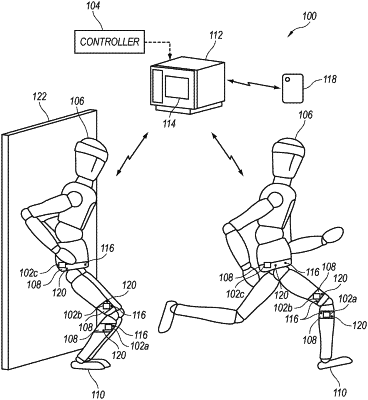| CPC G06Q 30/0631 (2013.01) [A61B 5/0077 (2013.01); A61B 5/112 (2013.01); A61B 5/1127 (2013.01); A61B 5/1121 (2013.01); A61B 5/7275 (2013.01); A61B 5/743 (2013.01); A61B 2503/10 (2013.01); A61B 2503/12 (2013.01)] | 24 Claims |

|
1. A method performed by a computing device for evaluating lower body movement and recommending footwear, the method comprising:
receiving from one or more motion detection devices first body movement data related to first movements associated with lower body portions of a human in a first state related to first loads applied to the human's body;
storing the first body movement data in a memory coupled to a controller;
receiving from the one or more motion detection devices second body movement data related to second movements associated with the lower body portions of a human in a second state related to second loads applied to the human's body, wherein the second loads are greater than the first loads;
storing the second body movement data in the memory;
comparing with the controller the second body movement data to the first body movement data;
based on the comparison, identifying a trend corresponding to a change in the movement of the lower body portions from the first state to the second state;
analyzing the trend and characteristics of a plurality of footwear models, and
recommending footwear for the human based on the analysis of the trend, wherein the footwear is configured to counteract trends of movement of the lower body portions away from the first state.
|